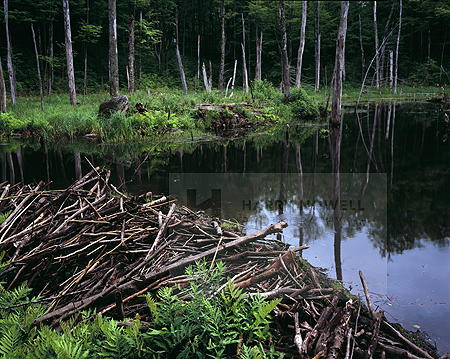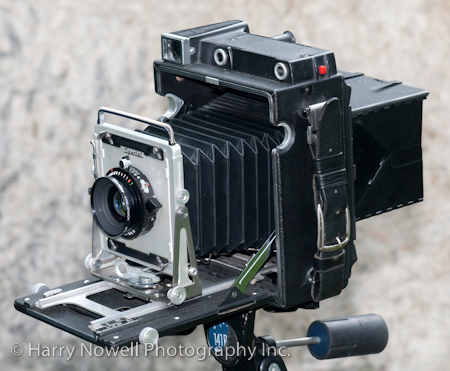Exposed! :: Return of Film ::
© Copyright 2011. All Rights Reserved.
Contents
"That was terrible!" I exclaimed when I returned from picking up some newly processed medium format film I'd shot.
My ever-patient wife asked, "What happened?"
I grumbled a bit and finally admitted, "The work wasn't perfect."
I explained that in event photography, candid portraiture and weddings excellent is good enough. But when it comes to certain types of artwork, especially with film, it needs to be perfect, or it's just plain "terrible!"
Film is a tricky medium. There are no guarantees -- just experience and knowledge to help guide your way. I still shoot film for certain aspects of my photography work and in this edition of Exposed! we help answer the question "Why shoot film photography?" Below are many reasons some working and hobby photographers shoot with film:
Surviving harsh conditions
Digital cameras are more susceptible to water, cold, power shortages, and other harsh environments. I have shot in some unwelcoming environments -- pouring rain of Iceland and New Zealand's south island, dusty dry heat of Australlia's outback, bug-infested Northern Ontario, ski events and ice fishing at 25 below, as well as the wet, sloppy conditions of spring skiing where equipment got slushed to get "the shot." In these environments my mechanical film cameras far out-perform their electronic digital relatives.
The process
Shooting film is a different process than digital. It requires a slower pace and a stronger skill set to ensure you achieve the results you want. In the world of fine art the work's value is measured in aesthetics as well as the process used to create the art. There is value to how the photo was taken.

Digital version of a 4 x 5 slide shot for artwork, printed very large.
Archiving
Film offers an additional back-up to make sure your photos remain accessible. Digital archives are susceptible to corruption. A piece of well stored film is at risk of damage, too, but gives an excellent back-up.
Last year my parents wedding album surfaced. I opened the 47-year-old album and the B&W photos inside were in perfect shape -- vibrant with good contrast -- I hope we can say that about current digital prints in 47 years.
Challenges
People are often surprised to hear I continue to shoot on film.
Shooting film requires better skills. There are tools that can help you ensure a good exposure -- external light meters, Polaroid backs, digital cameras to preview but they all give an approximation -- even pre-shooting digitally will not ensure you get a correct exposure.
Effectively shooting film -- especially in tricky lighting conditions -- requires a better foundation in the fundamentals of photography. And going back to re-shoot is not always practical.
If you have solid skills with a digital camera, try a film camera. They're quite cheap and should accept many lenses you already own. The challenge may ignite a new passion for your photography.
File size
Do you want to print big AND have it look jaw-droppingly good?
Shooting with a 4x5 camera will produce a sharp and enormous reproduction. Large-format equipment is readily available with a little search and produces slides that are 4 inches by 5 inches. Most digital SLR cameras shoot with sensors that are approximately 0.6 inches by 1 inch. That's JUST over 3% the coverage of 4x5 coverage. Now, size of 'sensor' is only a small part of the puzzle when talking quality of reproductions but there is value in capturing imagery on large film for large prints.
There are other reasons to shoot film, too. PopPhoto.com lists these reasons to shoot film:
- image sharpness
- specific look -- each brand of film has its own characteristics that will help you achieve results. They are reproducable in the computer but at an expense of time and money.
- wider tonal range. Ken Rockwell elaborates on Dmax and depth range
- $money -- In many applications film is cheaper than digital. If you are shooting thousands of candids of your family every week buy a digital point-and-shoot. But if you are carefully crafting a few photos a week, film is a better financial investment.

Large Format Film Photography
Homework
This month I have two challenges for you:
- As a pseudo film trial go and shoot for an afternoon self assignment WITHOUT looking at your digital preview UNTIL YOU ARE AT HOME. No cheating. Turn the preview off or cover your screen, if possible so you are not tempted to peek. Wait until you get home to see how you did.
- Want a greater challenge? Use a film camera of some descripton - toy camera, 35mm SLR, medium or large format. Buy some inexpensive film to start and embrace the challenge.
Pro Perspective
For commercial work, most portraits and most magazine work I shoot digitally. Digital is usually expected in these situations. For artwork and some personal work - especially when I want to print big - film is my first choice. And much of this work is shot on medium or large format.
There are still many people who shoot with film locally and afar.
Helene-Anne Fortin runs a busy portrait studio PortraitsofyourLife.com in Wakefield Quebec with clients traveling from afar.
As she explains, "[I shoot film]...for the quality and longevity. In a piece of black-and-white film, there are 180,000 gradients from pure white through the mid-ranges of gray into pure black. In digital, pure blacks are difficult to achieve, and the mid-ranges of gray can easily turn to mush."
Final Frame
Challenge youself.
Take (film) photos.Have fun.

